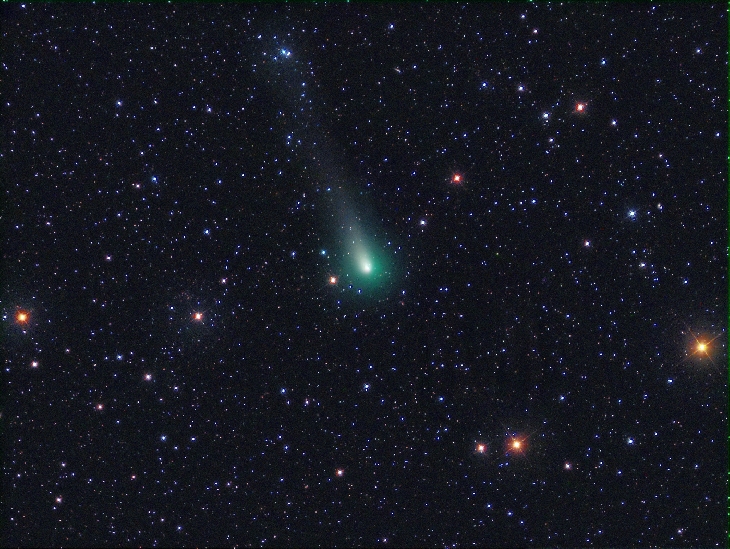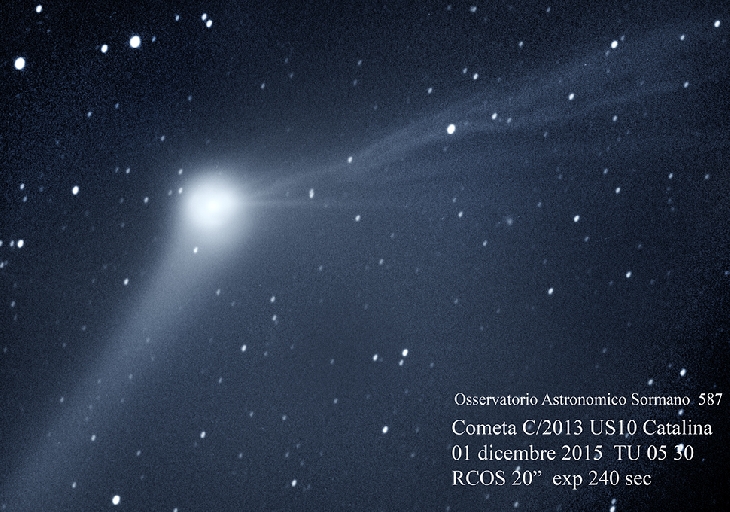Comets have been shown to be unpredictable. Sometimes comets even disintegrate. But these comets are well worth following!
Comet PANSTARRS (C/2014 S2) and Comet Catalina (C/2013 US10) are currently cruising our sky enabling astronomers to shoot awesome pictures.

Comet PANSTARRS (C/2014 S2) will reach perihelion in early December.

In mid January 2016 this comet will pass within 0.7 AU of the earth.

Comet PANSTARRS (C/2014 S2) is a northern hemisphere morning comet visible in binoculars. This comet begins the month in Draco at magnitude 8.8. Look for a 2.5′ coma. It should remain constant.

Meanwhile Comet Catalina (C/2013 US10) reached perihelion in mid November.

In mid January 2016 this comet will pass within 0.7 AU of the earth.

Comet C/2013 US10 (Catalina) will gradually become easier to spot this week, even in binoculars.

Comet Catalina is showing two tails.

Most comets do show two tails: a dust tail and a plasma tail of ionized gas.
These tails are usually not related to the direction of travel but are related to how the gases and dust react to solar heat.

Comet Catalina was closest to the sun on November 15 (perihelion). Current magnitude ranges between 6.5 and 6.1. Using binoculars, the comet will appear as a small fuzzy patch of light.
It’s really comet chasing time as sometimes they just disappear.
How did you find these beautiful pictures of Comet Catalina and Comet Panstarrs?












